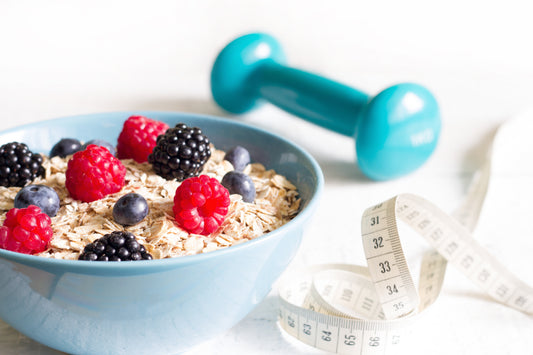As we journey towards well-being, we often come across new terms, and the realm of supplements is no exception. To help you in this exploration, we've crafted a handy glossary. This resource sheds light on terms that might catch your interest or raise questions as you browse our website. Empowering you to make informed choices that best align with your health and wellness goals.
Within this glossary, you'll find terms that highlight the ingredients we proudly use in our products and those we steer clear of. You'll encounter terminology related to product quality, intricacies of labeling, and various abbreviations that may puzzle even the savviest supplement seekers.
So, without further ado, let's delve into the definitions.
Glossary of Terms
- Absorption: A process by which nutrients are transported from the gastrointestinal tract into the blood or lymph so that they can be utilized by cells throughout the body. (1) Factors that can influence nutrient absorption include the type of nutrient (e.g., fat-soluble vitamins vs. water-soluble vitamins), the presence of other nutrients or substances that can enhance or inhibit absorption, the health of the gastrointestinal tract, and individual variations in genetics and health conditions. (2)
- B Corp (certification): A private certification awarded to businesses that prioritize social and environmental concerns before profitability. It indicates that a company excels in areas like employee welfare, environmental responsibility, and community support. Achieving B Corp certification reflects a commitment to a broader positive impact. Moreover, certified companies pledge to consider the interests of all stakeholders, underscoring their dedication to responsible business practices. This informs customers that the company is genuinely invested in contributing to a better world.

- Binders: Substances used for establishing stable tablet forms - ensuring product integrity from manufacturing to consumption. While commonly used in tablet formulation, certain synthetic binders have been linked to digestive discomfort or other adverse reactions. (3)
- Bioavailability: The proportion of a nutrient or compound that enters the bloodstream and becomes available for use by the body after it has been consumed. It takes into account how well the substance is absorbed, distributed, metabolized, and excreted. (1) High bioavailability indicates efficient absorption and utilization of the nutrient, while low bioavailability suggests that only a limited amount of the nutrient is effectively absorbed and utilized by the body.
- Botanicals: Refers to plant-derived ingredients or extracts.
- Carrageenan: A natural extract from red seaweed. In food supplements, carrageenan is used to thicken and stabilize products like gummies and capsules. Carrageenan may contribute to negative health effects, with some studies linking it to inflammation and gastrointestinal issues. (4)
- Clean label: The term refers to a movement within food and supplement industries that encourages transparency and simplicity in product ingredient lists. Products with a clean label typically have fewer and easily recognizable ingredients, avoiding artificial additives, synthetic chemicals, and complicated or unfamiliar names.
- Clean Label Project (certification): The Clean Label Project certification addresses the concerns consumers have about harmful chemicals and environmental contaminants in the products they buy. The Clean Label Project sets strict purity standards based on comprehensive data, rewarding brands that rank in the top 33% of their product category. (5)

- COA: Certificate of Analysis. A formal document provided by manufacturers to confirm the quality and safety of a product or ingredient. COAs typically include tests for content, presence of heavy metals, and microbiological contamination.
- Co-factors: Co-factors, in the context of vitamin and mineral absorption, refer to compounds present in whole foods that enhance the bioavailability and utilization of vitamins and minerals by the body. Examples of co-factors may include certain proteins and carbohydrates, pre & probiotics, enzymes, and organic acids. (6)

- DFE: DFE, or "Dietary Folate Equivalent", is a measurement addressing the differing bioavailability of folic acid and naturally occurring folate. Folate, found naturally in foods, is less bioavailable than folic acid, a form present primarily in supplements. Approximately 85% of folic acid is absorbed when taken with food, compared to about 50% of food folate. This results in 1 mcg DFE being equivalent to 1 mcg food folate, 0.6 mcg folic acid from fortified foods or supplements ingested alongside food, and 0.5 mcg folic acid from supplements taken without food. (7)
- DV: Daily Value. A term used in nutrition labeling to provide consumers with information about the nutrient content of a serving of food or supplement in relation to their daily diet. It is typically presented as a percentage on the nutrition facts panel, indicating how much a specific nutrient in a serving contributes to a daily diet of 2,000 calories. (8) The Daily Value is based on dietary recommendations and helps consumers assess the nutritional significance of a product within the context of their overall daily intake. The concept of DV is primarily used in the United States and Canada.
- Excipients: The non-active components present in the product, including fillers, binders, preservatives, flavorings, and other additives used in the manufacturing process. On a product label, excipients are typically listed under the "Other Ingredients" section, which is usually found alongside the "Supplement Facts" or "Nutrition Facts" panel.
- Fillers: Supplement additives used to add bulk to the capsules, improve stability, or simply reduce manufacturing costs. While not universally 'bad', certain additives like titanium dioxide (considered a potential carcinogen) have gained a negative reputation. (9) Fortunately, natural alternatives can fulfill the role of fillers, aligning with a growing preference for cleaner options. To safeguard the capsule's integrity and prevent breakages, small amounts of Nu-FLOW®, a natural rice-based filler, are incorporated into select Performance Lab® formulations. Prioritizing potency, we always ensure that the full actives are added first before using Nu-FLOW® to fill any gaps.
- G: Grams.
- IMMUSE™: A paraprobiotic featuring a patented strain of lactic acid bacteria, scientifically known as Lactococcus lactis strain Plasma (LC-Plasma). IMMUSE™ is uniquely capable of stimulating multiple types of immune cells providing comprehensive support for both innate and adaptive immunity. (10)

- Informed Sports: A certification program that tests and certifies sports supplements to be free from substances banned by various sports organizations. Athletes use Informed Sports-certified products to minimize the risk of unintentionally consuming prohibited substances that could lead to disqualification.
- IU: IU stands for International Unit. It is a measurement used to quantify the biological activity or potency of certain vitamins. For instance, in the case of vitamins A, D, and E, different forms or analogs of a vitamin might have varying biological effects. (11) As a result, the actual weight of the substance may not accurately represent its physiological impact. IU provides a standardized way to express the potency of these substances.
- Liposomal: A term referring to the minuscule lipid-based spheres used to encapsulate bioactive compounds - vitamins, minerals, and botanicals- to improve their absorption in the body. By providing solubilization and protection, liposome encapsulation overcomes challenges like poor water solubility and degradation during digestion. (12)

- Mcg: Mcg is a unit of measurement equivalent to one millionth of a gram.
- Mg: Mg is a unit of measurement equal to one thousandth of a gram.
- MLP: Mind Lab Pro® - our flagship nootropic formula scientifically proven to enhance cognitive function.

- Nature-identical (nutrient form): Refers to nutrients with the same chemical structure as the forms found naturally in food.
- NE (niacin equivalent): NE is a unit used to express the combined content of niacin and its precursor, tryptophan, in food. (13) This unit accounts for the contribution of both substances to the body's overall niacin intake.
- Nootropic: Nootropics are substances known to enhance cognitive performance by improving mental functions such as memory, creativity, motivation, attention, etc. (14) Nootropics can be either natural or synthetic; contrary to the synthetic 'smart pills', natural nootropics not only boost the brain function but also promote brain health.

- NRV: Nutrient Reference Value. A term used in nutrition labeling to present the recommended daily amount of a nutrient that is considered sufficient to meet the needs of a healthy population. NRV is a term commonly used in the European Union (EU) and United Kingdom (UK) to provide guidance on the recommended daily intake of nutrients.
- NRV N/A: Indicates that there is no established Nutrient Reference Value for a particular nutrient.
- Nu-FLOW®: A natural alternative to synthetic anti-caking and flow agents, obtained from sterilized and powdered rice hulls. Nu-FLOW® is certified gluten-free and organic.
- Nutraceutical: Created by combining the terms 'nutrition' and 'pharmaceutical,' nutraceutical refers to a food or food-derived product that offers additional health benefits beyond basic nutrition. (15)
- NutriCaps®: Vegan capsules made from fermented tapioca (pullulan).

- NutriGels®: The world's first vegan softgels. Carrageenan free - made with gellan gum, pectin, starch, and glycerin.
- NutriGenesis®: NutriGenesis® is a method of producing cultured nutrients which replicates the creation of vitamins and minerals in nature. In the NutriGenesis® process, micronutrients are introduced as mineral salts into a growth medium containing botanical, probiotic, or yeast cultures. These cultures then absorb the mineral salts, along with micronutrients and water. The well-nourished nutrient culture undergoes growth, dividing and multiplying its cells. Through this natural process, the live cells generate new vitamins and minerals within a matrix of cofactors. Because they match whole foods' natural nutrients-with-cofactors structure, NutriGenesis® nutrients can be more easily recognized, absorbed, and utilized by the body.

- Nu:tropic: Our oat-based energy bar packed with all the essential daily nutrients that the brain needs. It is free from artificial additives and gluten, and comes in four natural flavors: Apple + Cinnamon, Maple + Pecan, Raisin + Almond, and Salted Caramel.

- Paraprobiotics: Inactivated bacterial strains or bacterial fragments which when administered in adequate amounts, confer a health benefit. (16) Also sometimes referred to as postbiotics.
- PLP: Pre Lab Pro® - our nootropic-enhanced pre-workout formula.

- Prebiotics: Non-digestible fibers or compounds found in certain foods that promote the growth and activity of beneficial bacteria in the gut. Prebiotics serve as food for probiotics, helping them thrive and improve gut health. (17)
- Probiotic: Live beneficial bacteria or yeasts. When ingested in adequate amounts, probiotics confer health benefits by promoting a balanced microbial environment in the gut, which in turn supports digestion and overall well-being. (18)

- Pullulan: A naturally occurring polysaccharide produced through the fermentation of tapioca starch. It has prebiotic properties, meaning it may serve as a food source for beneficial gut bacteria. (19) When compared to gelatine, which is animal-derived, and hydroxypropyl methylcellulose (HPMC), which is semi-synthetic, pullulan stands out as a plant-based, natural-origin capsule shell material.
- Third-party testing: Third-party testing involves an independent laboratory or organization, analyzing and evaluating products for quality, safety, and adherence to standards or regulations. This process helps verify the accuracy of product claims and ensures transparency for consumers.
Conclusion
As we wrap up this glossary, let's keep in mind: the power of informed decision-making lies in the details.
Ultimately, more knowledge equals sharper discernment for quality brands and products.
And as labels become clearer and complex terms become more understandable, making the right choice becomes that much easier.
References:
- 1. https://ift.onlinelibrary.wiley.com/doi/10.1111/1541-4337.12623
- 2. https://www.ncbi.nlm.nih.gov/pmc/articles/PMC6020734/
- 3. https://www.ncbi.nlm.nih.gov/pmc/articles/PMC9431890/
- 4. https://ehp.niehs.nih.gov/doi/abs/10.1289/ehp.01109983
- 5. https://cleanlabelproject.org/clean-label-project-certification/methodology/
- 6. https://www.frontiersin.org/articles/10.3389/fnut.2020.00101/full
- 7. https://ods.od.nih.gov/factsheets/Folate-HealthProfessional/
- 8. https://www.fda.gov/food/new-nutrition-facts-label/daily-value-new-nutrition-and-supplement-facts-labels
- 9. https://www.mdpi.com/1422-0067/22/1/207
- 10. https://www.ncbi.nlm.nih.gov/pmc/articles/PMC7333011/
- 11. https://pubmed.ncbi.nlm.nih.gov/6259921/
- 12. https://www.sciencedirect.com/science/article/abs/pii/S0924224420305707
- 13. https://ods.od.nih.gov/factsheets/Niacin-HealthProfessional/
- 14. https://www.hindawi.com/journals/ecam/2016/4391375/
- 15. https://pubmed.ncbi.nlm.nih.gov/10515789/
- 16. https://www.frontiersin.org/articles/10.3389/fmicb.2019.01047/full
- 17. https://pubmed.ncbi.nlm.nih.gov/7782892/
- 18. https://www.sciencedirect.com/science/article/abs/pii/S1521691815001651
- 19. https://www.ingentaconnect.com/content/ben/cpb/2017/00000018/00000002/art00003














